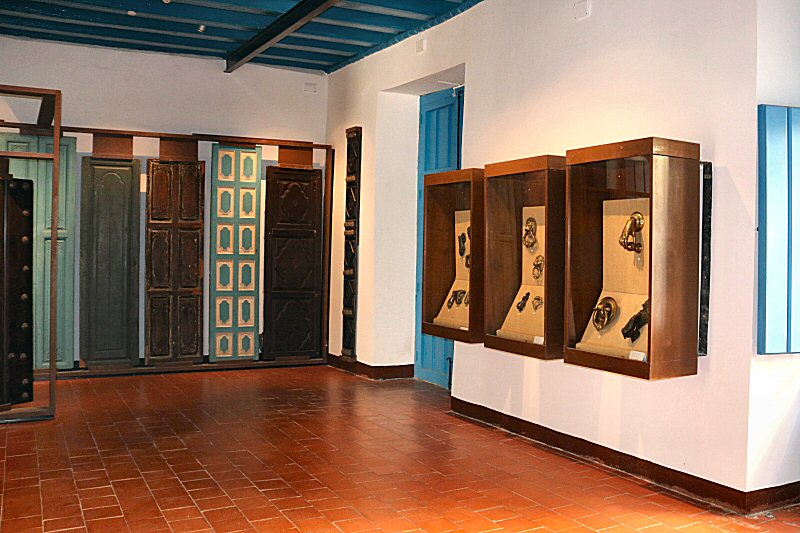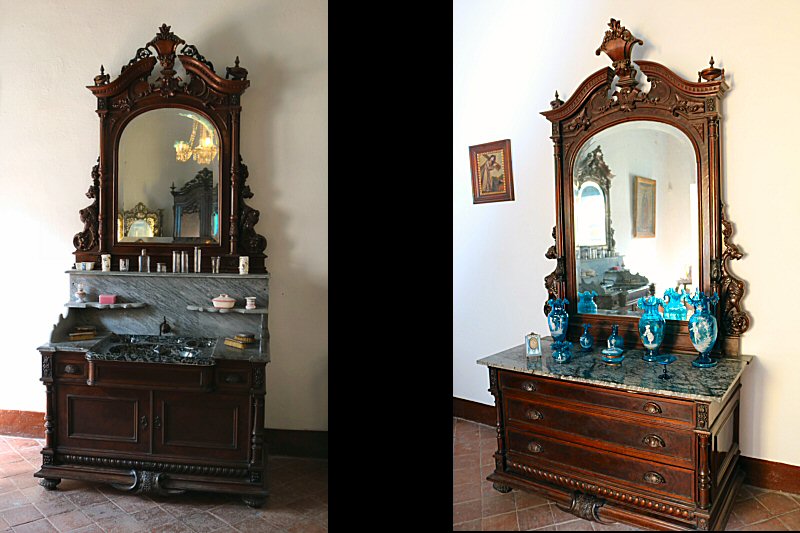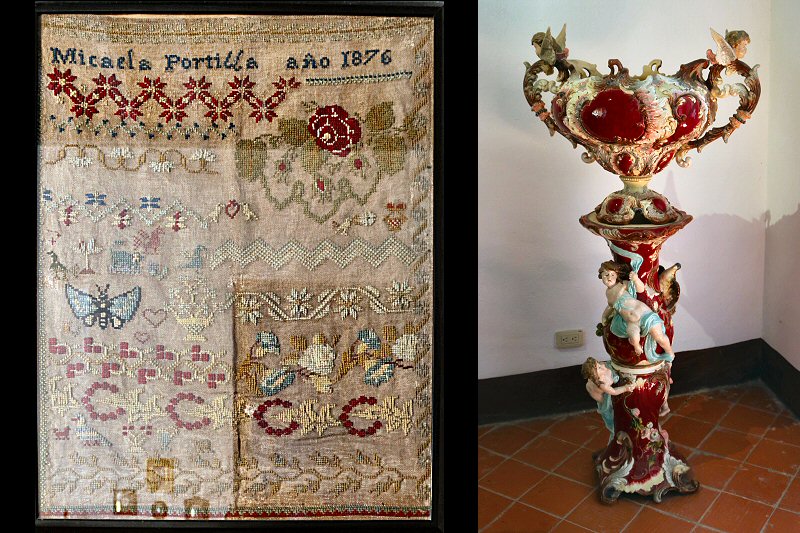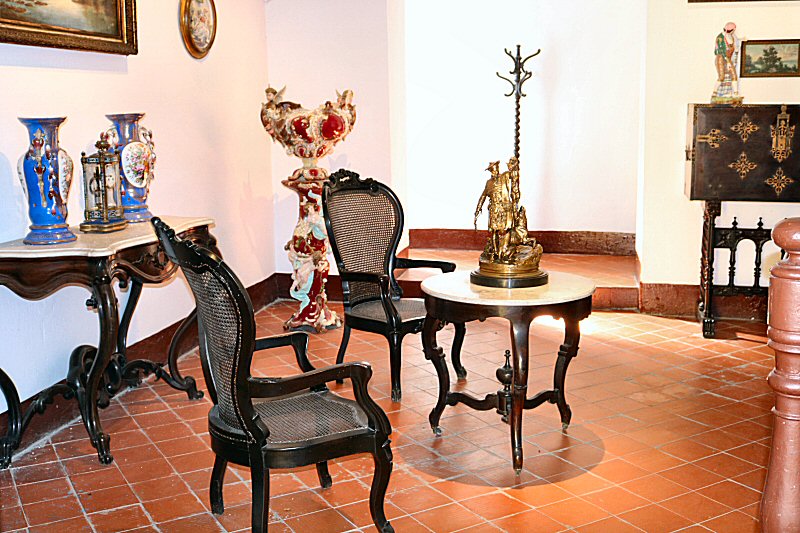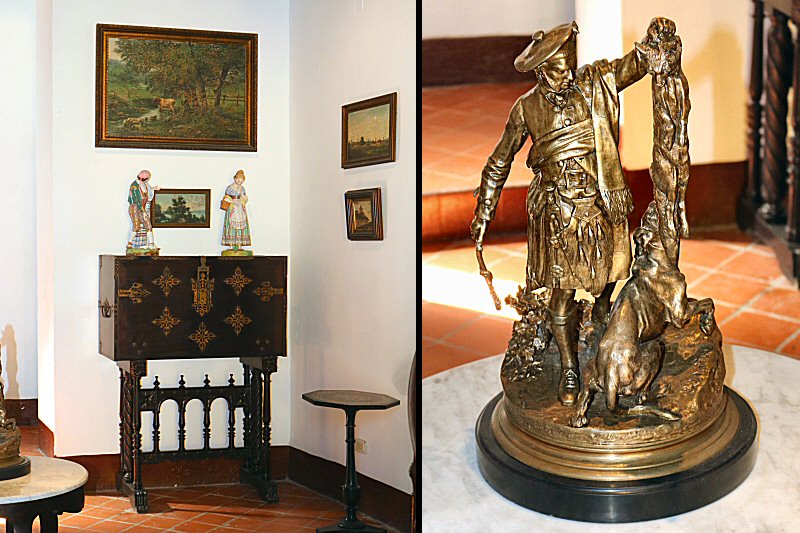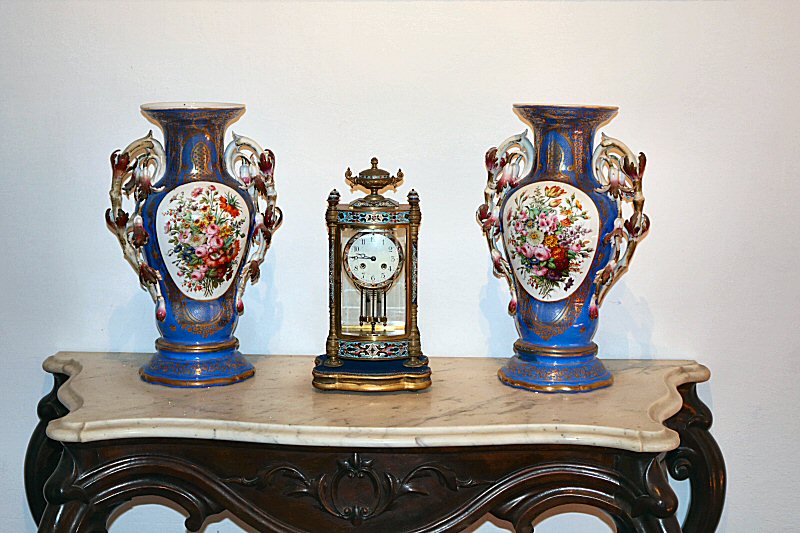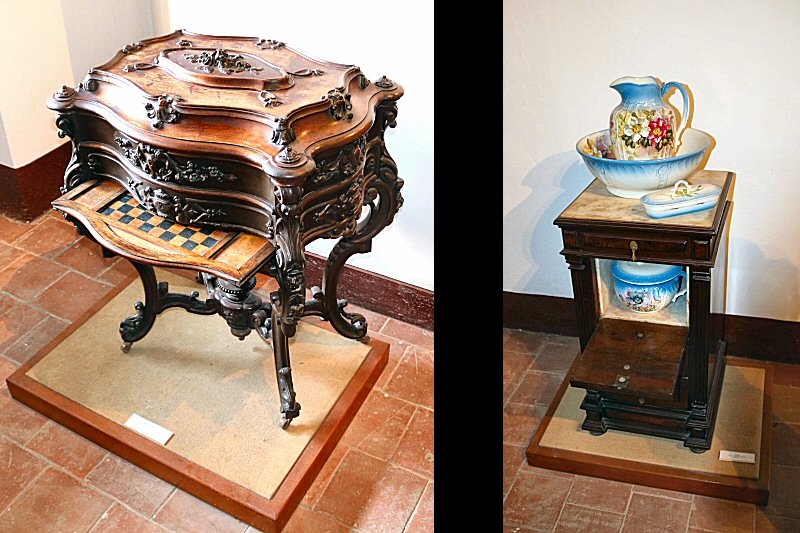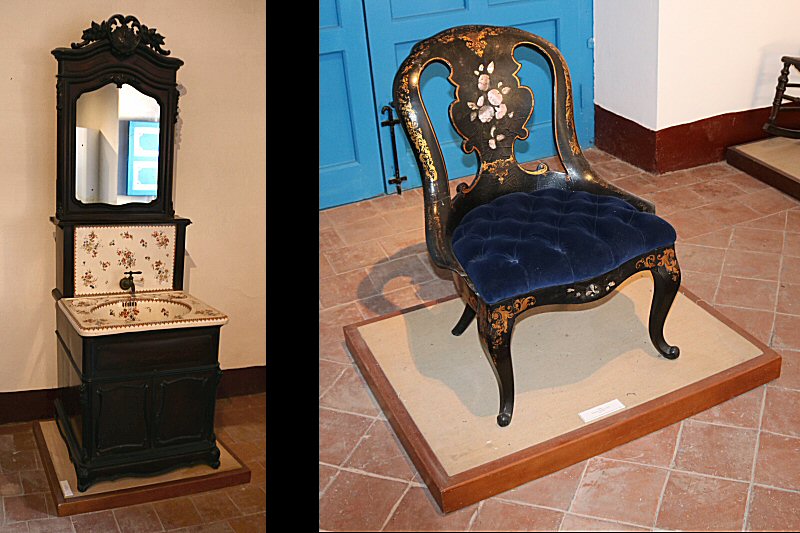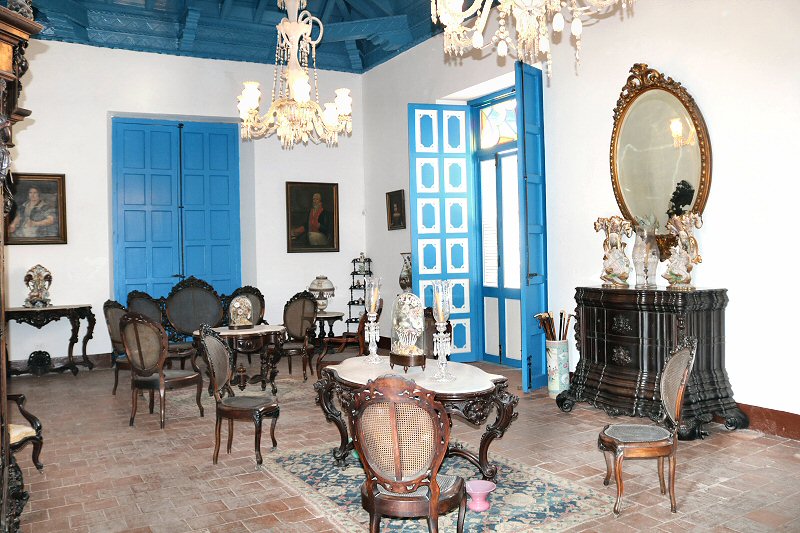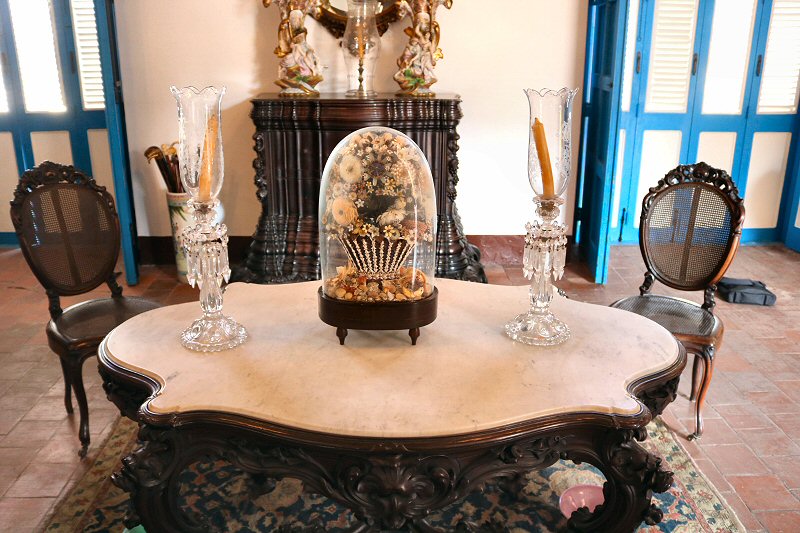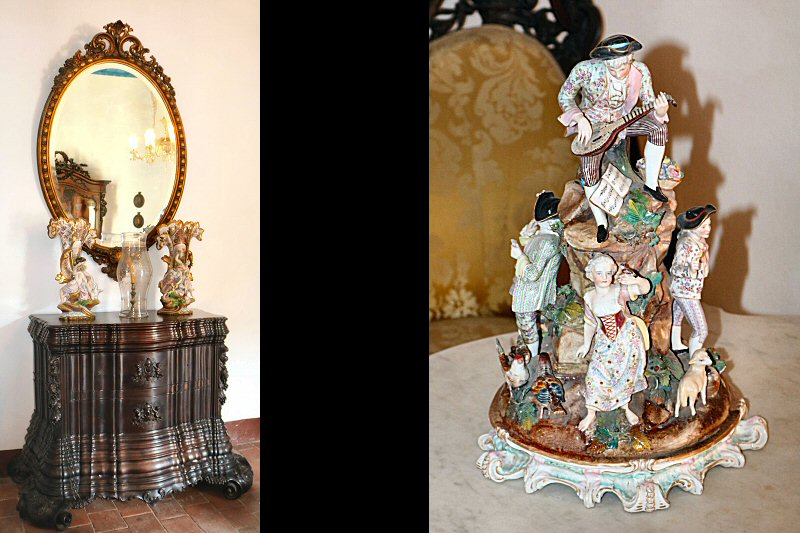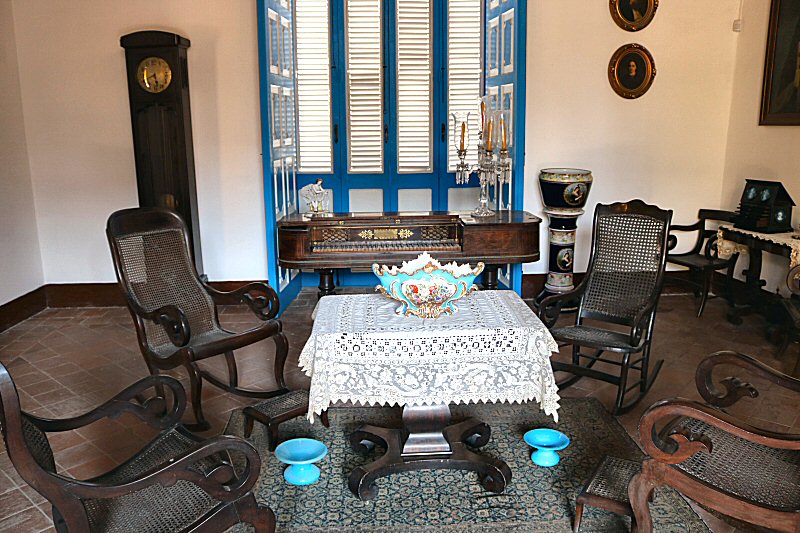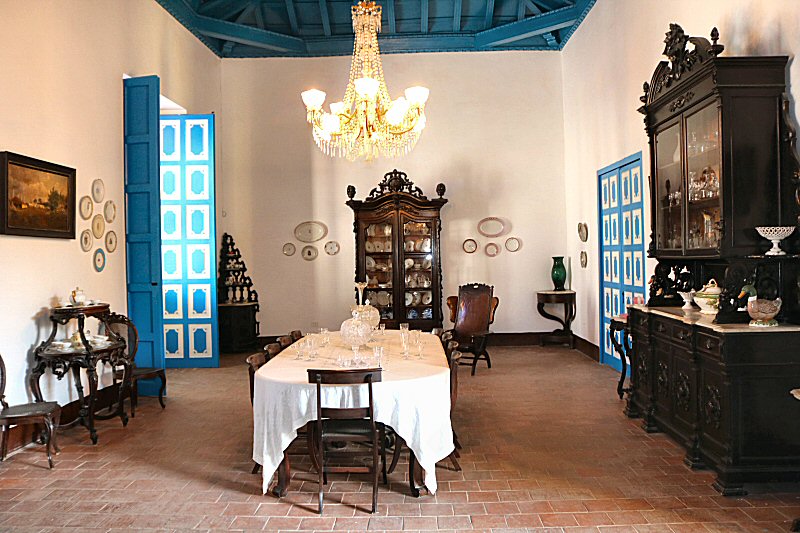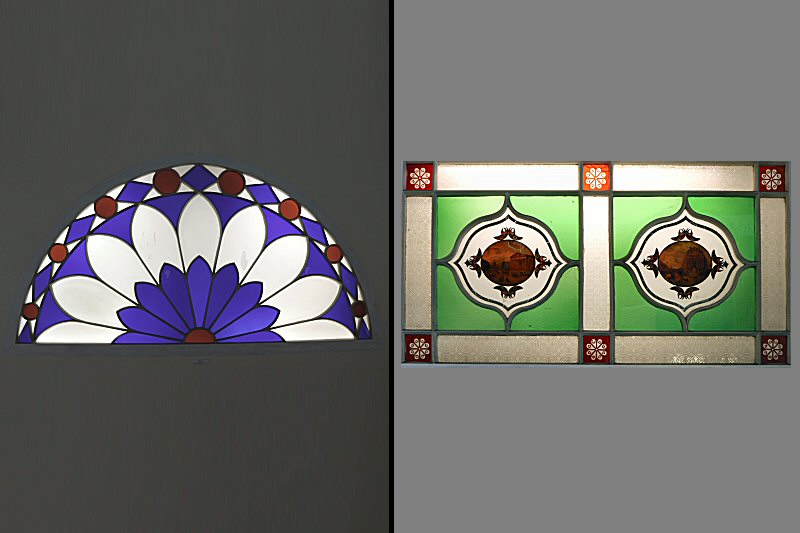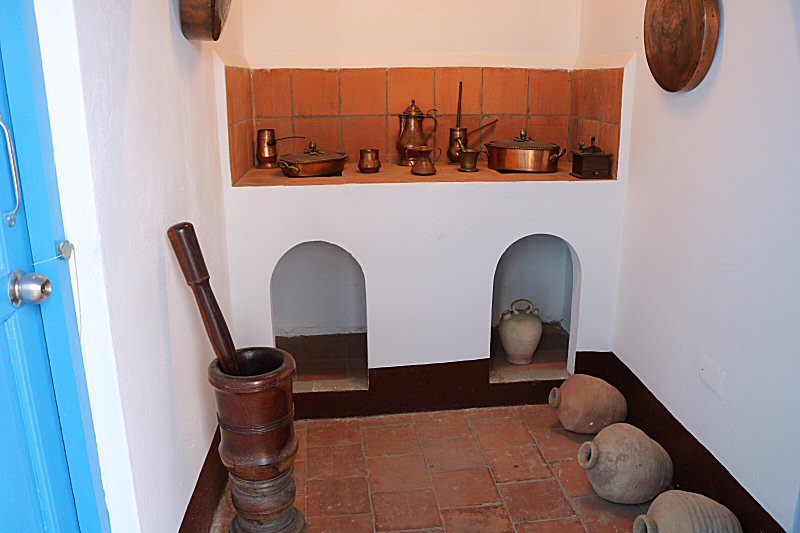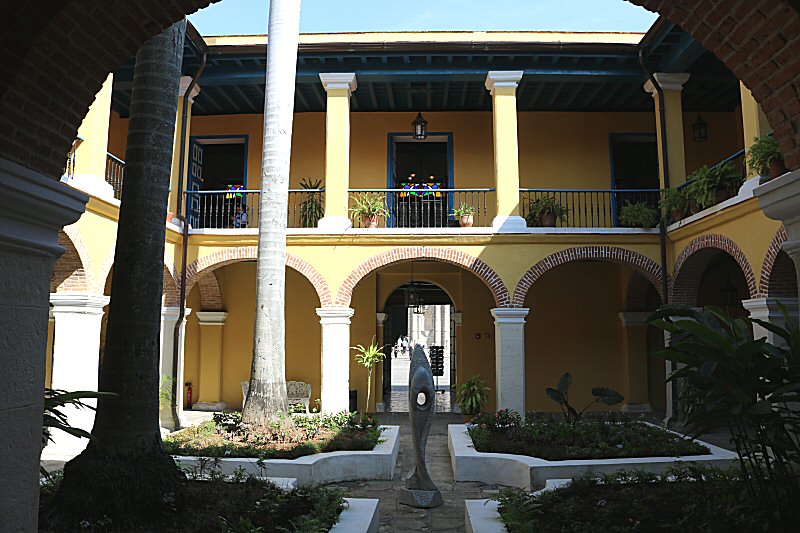
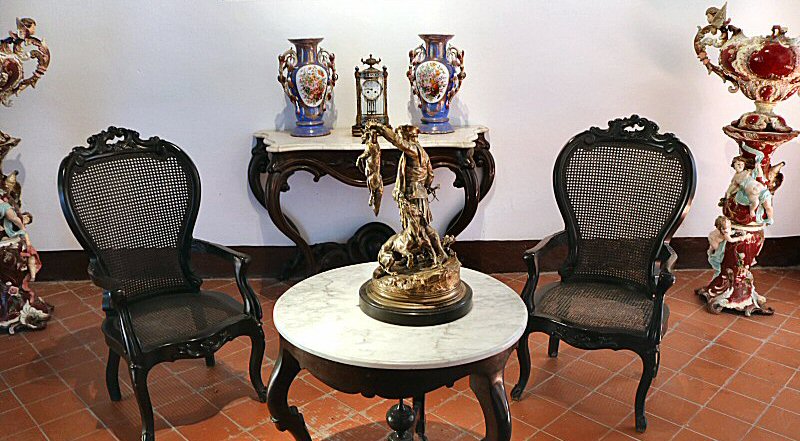
The building has a sober facade facing the Plaza de la Catedral. It has four exhibition halls, from which three are permanent. The transitory one is usually reserved for exhibitions related to the theme of the museum.
The ground floor is occupied by the garage and the permanent exhibition room that is dedicated for the collections of the architectural elements, assisting the visitor to make a panoramic look to the colonial architecture in Cuba. In showcases you will see the hardware used at the doors in the colonial time, such as keys, padlocks, door locks, keyholes, door knockers, door handles, bolts, hinges, nails, and so on. The collection of the door knockers and door handles show the influence of the Africans on the Cuban handicrafts. The door knockers of the Casa del Conde de la Reunión (current the Center of Fundación Alejo Carpentier, located on the Empedrado street #210, between the Cuba and the San Ignacio streets) and the Palacio de los Condes de Jaruco in the Plaza Vieja, as well as the keyhole of the side door of the Catedral de La Habana are illustrative pieces of the collection that show the development of the Cuban foundry in the colonial period.
In the second section of the same exhibition room an ample collection of the most used outer- and inner doors in the houses from the 18th century until the end of the 19th allows us to appreciate their diversity of design.
The Casa del Conde de Casa Bayona has a large inner courtyard, surrounded by galleries, and a backyard, used as the garage.
In the garage, objects related to transport are exhibited that illustrate the quality of the work of the artisans on metals and leather. The livery of the slave drivers (caleseros), spur and stirrups of various design and carvings, and a luxury quitrin, the lightweight, single-axe carriage, pulled by horses, are the most outstanding pieces of the collection.
The upper floor that contains collections of Cuban furniture and glassware, consists of the bed room, sitting room, the cabinet, the dining room, the kitchen and two permanent exhibition rooms. The coffered ceilings have elaborately carved design.
Some religious pictures are hung on the walls of the bedroom. On the night table next to the bed stands a bell, used to call the servants. The cradle, the prie-dieu chair, the cheval glass and the cabinet with blue vases on it, are the other objects exhibited in the room. An etamine piece from 1876 is framed and hung on the wall. The washbasin mounted into a cabinet looks like a makeup table with several perfume bottles, combs, and brushes. The wardrobe is occupied by a woman’s personal objects, like fan, binocular, hair pins and religious devotional hat. The 1-meter tall Majolica flower vases and the original Italian Murano crystal chandeliers should not be missed. Majolica is Italian tin-glazed pottery dating from the Renaissance period.
In the sitting room there is a complete original sitting set of Rococo-Victorian style that consists of medallion chairs, the most used in the main salons in Cuba, made by the American cabinet maker John Henry Belter. A chest of drawers, on that the shield of the Counts of Lagunillas is carved, stands out. Such kind of furnitures were used very common in the 18th century. The porcelain and and glassware objects in the room belong to different European manufacturers.
The cabinet where the family spent most of its time and carry out its private daily activities, is decorated with a good veneered sitting set composed of rocking chairs that exhibit simplicity in their design. Such rocking chairs are still preferred in Cuban homes. The pendulum clock and the multi-level humidor are outstanding, but the most outstanding piece of the room is the English piano of Sheraton style.
The dining room has the ambience of the 19th century that lays bare the wealth of the aristocratic Creole families. The Campeche armchairs stands out. The French glassware and the European porcelain tableware are marked with the titles of the nobility. Their diversity in style and design is a sign of the luxury and ostentation of a social class that used to imitate European fashion trends. Among the most important manufacturers are Limoges, Worcester, Royal Doulton, William Adams, Pickman and Sargadelos. There are also some English and Spanish pottery pieces such as William Adams, Macuriges, Casa Romero and Casa Montalvo. The oil paintings on the wall belong to Cuban painters. One of them belongs to the famous landscape painter Esteban Chartrand.
The kitchen contains pots and containers made of copper and cruses made of clay.In the last room multicolored stained glass windows with flower motifs, decorative panels, folding screens and ornamental partitions are exhibited.The museum offers guided tours, as well as courses, specialized conferences, concerts, exhibitions and cultural activities.

